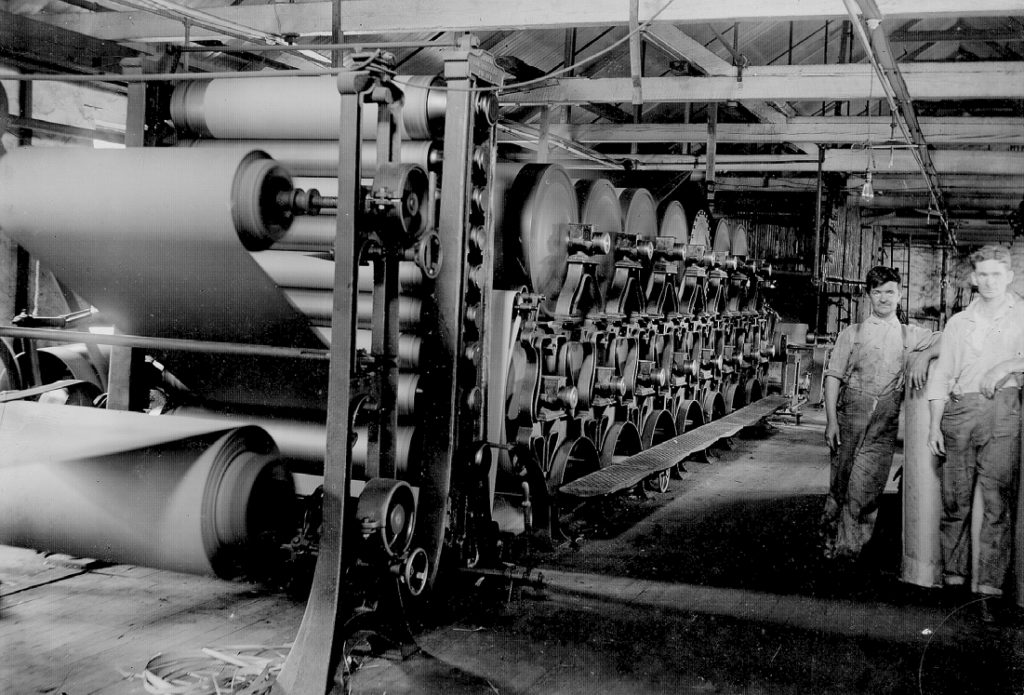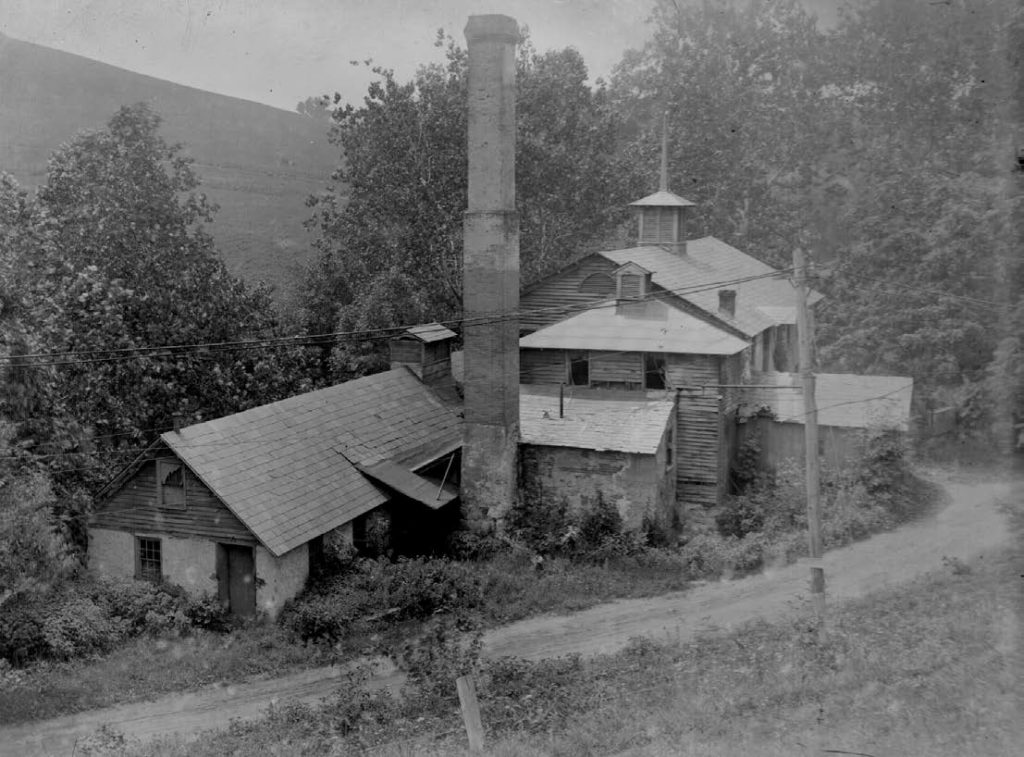UNSEEN FOR HALF A CENTURY, MAYBE LONGER
Answer
The second image of this month’s question is where the Marshall industrial rag paper involvement began – Thomas S. Marshall’s Homestead Paper Mill at Marshall’s Bridge, Kennett Township, PA. This is the mill where Israel and Elwood learned the papermaking trade from their father! Documented photos in the T. Clarence Marshall Collection at Hagley Museum & Library as well as photos in the Charles S. Philips Collection at the Chester County Historical Society confirm the mill’s identity.
A similar image dating from sometime in the 1880s has been displayed in the Marshall Museum and used for various publications. In that image the mill is definitely in operating condition as there is not the uncut growth of plants and grasses around the building. In this image, which has to be post 1904 due to being in in the Stanley-Kodak box and the timeframes of the other images, the mill looks more unused and neglected. While we don’t know the exact year when the Marshalls stopped making paper at the Homestead Paper Mill, indications are it was in the first decade of the 1900s. Marshall paper mills at Wooddale and Yorklyn were steam-powered, efficient, and offered more capacity than the primarily water-powered Homestead Mill.
The dirt road in the foreground is Creek Road (Route 82). Center right is where the road makes a sharp right heading to Old Kennett Pike. Where the road goes behind the mill it crosses the Red Clay Creek to become what we know as Marshall Bridge Road today.
Sharing several of the other glass plate negative images, the photograph below includes the date “August 4, 1915” written on the edge of the glass plate, along with the caption “Marshall’s Meadow, Yorklyn, DE.” The photo, taken from the area where the water tower now stands, shows the West Chester, Kennett, and Wilmington Electric Railway tracks in the foreground. Benge Road is to the left, and Auburn Mill Road is just beyond the row of trees. While we’ve been amazed at the flooding of the Red Clay in recent years, especially twice in one week this past August, it is obvious from Clarence’s photography of multiple floods, the creek swelled above its banks a century ago!
Tom Marshall wrote about the building featured below. Folks today often see the door in the white stone wall on Creek Road as you approach Yorklyn Road’s Iron Bridge and wonder what it was for. It was the door to the spring and ice house for the Snuff Mill Superintendent’s home (a Mr. Durham according to Tom), which was built in the latter 1800s. Becoming known as the “Boarding House” when it was operated by the Jackson family, in 1937 it was razed. Tom, in his writings, noted that the porch frequently collected the occasional stray autocarriage of the era! One of the Garrett Snuff Mill buildings is at the right edge of the image, the remnants still standing close to a paved Creek Road today.
Our final image is of Yorklyn a century ago, taken from atop the high hill across from Auburn Heights. In the foreground is Lower Snuff Mill Row which were snuff mill worker’s homes. The Garrett mansion (behind trees) and 1904 constructed superintendent’s homes are center right. The Garrett Snuff Mills are in the foreground center left with Marshall’s National Fibre & Insulation mills in the distance with their water tower and tall smokestack dating the photo to sometime in the late nineteen-teens or later.





